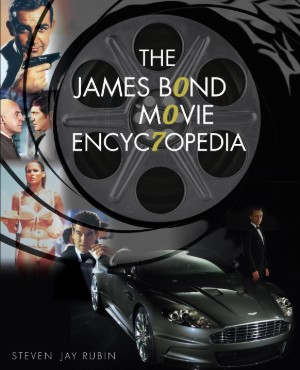Italian name for the fabulous yacht belonging to Emilio Largo (Adolfo Celi) in Thunderball. In English, the name translates as “Flying Saucer.” Equipped with a false bottom through which SPECTRE frogmen can deposit their hijacked A-bombs. The yacht’s normal speed is twenty knots. However, at the drop of a switch, the Disco Volante can jettison its rear superstructure—the cocoon—and transform into a swift hydrofoil craft. To fight a delaying action, the cocoon is equipped with machine guns and an artillery piece.
In Thunderball, 007 (Sean Connery) discovers the Disco Volante’s false bottom and photographs it with an infrared underwater camera supplied by Q (Desmond Llewelyn). The pictures convince him that the yacht could have picked up the stolen A-bombs without generating surface activity. When 007 later disrupts Largo’s NATO project, Largo orders the cocoon jettisoned and makes his escape in the hydrofoil, which eventually grounds on a coral reef and disintegrates. The cocoon is obliterated by US Coast Guard warships.
To build the hydrofoil, production designer Ken Adam was sent to Puerto Rico in December 1964 to purchase the Flying Fish, an old Rodriguez hydrofoil that had once carried passengers between Venezuela and Mexico. Rodriguez was the manufacturing firm in Messina, Sicily, that had originally built swift hydrofoils for use in the Adriatic Sea.
The rusty craft was driven under its own power to a Miami shipyard for a complete overhaul. Its 1,320 horsepower Mercedes-Benz diesel engine was put into top condition to propel the extra fifty-foot cocoon that Adam was constructing nearby.
“We had two slip bolts holding the cocoon,” said Adam, who used a real pleasure yacht as the prototype for his own creation. “Some of our naval experts thought it wouldn’t work, but we had less trouble with the Disco than with any other gadget.
“The cocoon itself was about fifty feet long. We fitted it out with a yellow smokestack, two lifeboats, and a functional sundeck. Once the hydrofoil drove off, we were able to turn the cocoon into a floating arsenal. I installed the type of armament you would find on a destroyer, including an antiaircraft cannon, heavy machine guns, and armor plating.”[1]
Special effects expert John Stears later constructed a model of both the hydrofoil and the cocoon. Both were blown apart in the water tank at Pinewood Studios.
[1] Ken Adam, interview by Steven Jay Rubin, London, June 17, 1977.

